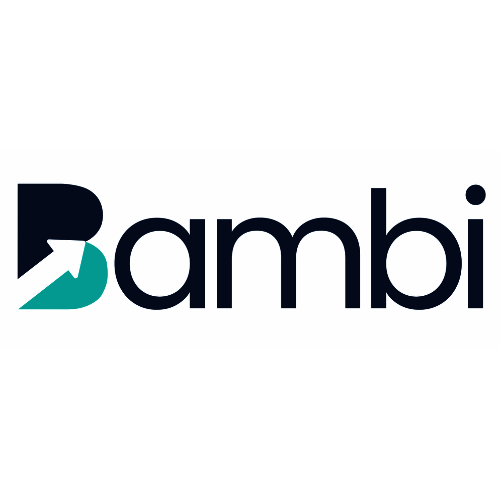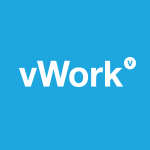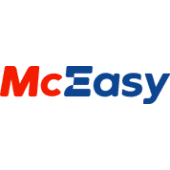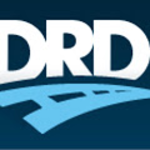What Is Transportation Dispatch Software?
Transportation Dispatch Software, or TDS, is a type of specialized software that streamlines and optimizes the process of coordinating transportation operations. It is an essential tool for enterprises and logistics companies who need to efficiently coordinate and monitor their fleet of trucks to ensure timely delivery of products and services.
With the growing complexity and volume of transportation operations, traditional methods such as manual paperwork, spreadsheets, and phone conversations have proven ineffective and error-prone. Transportation Dispatch Software offers a unified platform for automating and integrating operations such as route planning, dispatching, tracking, and reporting, making the entire process more efficient and structured.
One of TDS's important characteristics is its capacity to generate real-time data and reports, which provide managers and dispatchers with critical insights and analytics for making educated decisions and optimizing operations. It also enables good communication between drivers and dispatchers, resulting in the smooth and timely delivery of items or services.
Furthermore, TDS provides a full set of capabilities for managing a wide range of transportation activities, such as freight management, driver management, load tracking, accounting, and payroll administration. It also offers scalability and flexibility for adapting to changing business needs, as well as easy integration with other corporate systems.
Investing in Transportation Dispatch Software can provide various benefits to a business, including enhanced efficiency and productivity, lower costs, higher customer satisfaction, and greater control and visibility over transportation operations. Finally, it can help organizations remain competitive and profitable in the fast-paced world of transportation and logistics.
What Are The Recent Trends In Transportation Dispatch Software?
Transportation dispatch software has advanced significantly in recent years, meeting the changing needs of the transportation industry. These innovative technologies have transformed the way logistics and supply chain operations are managed, delivering real-time visibility, increased efficiency, and significant cost savings. To make an informed purchasing decision, a buyer must be aware of the most recent trends in transportation dispatch software.
Here are some notable trends in transportation dispatch software to consider:
1. Cloud-Based Solutions: As the demand for flexibility and accessibility grows, cloud-based solutions are becoming more popular in the transportation industry. These technologies give dispatchers access to critical transportation data from any device, anywhere, and at any time, allowing them to make informed decisions while on the road.
2. Artificial Intelligence (AI) And Machine Learning (ML): The transportation industry is leveraging AI and ML technologies to improve routes, minimize fuel consumption, and streamline dispatch processes. These intelligent systems can analyze massive volumes of data, identify patterns, and offer real-time recommendations, thereby increasing operating efficiency and reducing errors.
3. Interaction With IoT: Another notable trend in transportation dispatch software is its interaction with the Internet of Things. Using IoT devices, dispatchers may monitor truck location, temperature, and other critical data in real time, assuring efficient and timely delivery of goods.
4. Mobile Applications: With the extensive usage of smartphones and tablets, transportation dispatch software is now available as user-friendly mobile apps. This trend enables dispatchers to oversee operations, interact with drivers, and track shipments via portable devices, so minimizing the need for bulky infrastructure and expediting processes.
5. Big Data Analytics: The implementation of big data analytics in transportation dispatch software has resulted in the supply of actionable insights and predictive analytics. These analytics provide useful information about dispatch operations, allowing dispatchers to make data-driven decisions, optimize routes, and reduce costs.
Benefits Of Using Transportation Dispatch Software
Transportation dispatch software has become a vital tool for today's transportation companies. It streamlines and automates a variety of vehicle dispatching procedures, including delivery schedule creation, driver assignment, and cargo tracking. This comprehensive solution benefits organizations of all sizes, from small courier services to huge logistics enterprises.
Let's explore, we'll look at the main benefits of adopting transportation dispatch software.
1. Enhanced Efficiency: One of the most significant benefits of adopting transportation dispatch software is enhanced efficiency. This program reduces the need for manual processes, lowering the danger of human error while saving time. It automates processes like route planning, driver assignment, and real-time tracking, helping dispatchers to handle a bigger volume of requests more efficiently. This greater efficiency leads to speedier order fulfillment and more customer satisfaction.
2. Real-Time Tracking: Transportation dispatch software includes a built-in tracking capability that allows dispatchers to monitor the whereabouts of their vehicles in real time. This function delivers accurate shipment status information and enables rapid and efficient problem solutions. Dispatchers can also share this information with customers, providing them piece of mind while minimizing the number of customer support calls.
3. Improved Communication: Effective communication is critical to a successful dispatch operation. Transportation dispatch software allows dispatchers to communicate with drivers and other team members via the system, eliminating the need for several communication channels. This streamlined communication ensures that everyone is on the same page, which reduces miscommunication and delivery times.
4. Cost Savings: Implementing transportation dispatch software can lead to significant cost savings for enterprises. It optimizes routes and eliminates idle time, which leads to decreased fuel usage and vehicle maintenance expenses. Automation of manual operations also reduces labor expenses by eliminating the need for extra staff.
5. Data Analysis: Transportation dispatch software delivers useful data and insights that can help firms make more educated decisions. It monitors and analyzes critical performance indicators like delivery timeliness, driver productivity, and route efficiency. This data can be utilized to discover areas for improvement and make data-driven decisions, resulting in higher profits.
Important Factors To Consider While Purchasing Transportation Dispatch Software?
When selecting transportation dispatch software, buyers must examine numerous things to guarantee they are making the best investment for their company.
Here are the main aspects to keep in mind when assessing various software options:
1. Scalability: Determine whether the program is scalable to meet your company's changing needs. Will the software be able to handle an increase in the number of orders and vehicles as your business grows? Make careful to choose a system that can be tailored to your future requirements.
2. Integration Capabilities: Do you currently use other software or systems to manage various elements of your business? To improve operations and eliminate data duplication, you should select transportation dispatch software that is easy to interface with your current tools.
3. Usability: The software should be easy to use, especially for those who are not technically sophisticated. A confusing, difficult-to-navigate interface might reduce productivity and frustrate your dispatch team.
4. Cost: While price should not be the only deciding factor, it is crucial to evaluate the cost of the software as well as any additional payments for additional features or support. Look for a solution that is inside your budget while also meeting your business requirements.
5. Real-Time Tracking And Communication: In the transportation industry, punctuality is everything. Your dispatch software should support real-time tracking and communication so that your staff is always informed of the location and status of your cars and deliveries.
6. Modification: Because each organization has distinct requirements, selecting software that allows for modification is critical. This enables you to modify the program to your own business processes and workflows.
7. Customer Assistance: When comparing software solutions, examine the company's level of assistance. Look for a solution that provides 24/7 customer assistance, whether via phone, email, or live chat.
8. Security: Because sensitive information and data are shared and kept in the program, it is critical to select a solution with strong security measures in place. This will help to protect your company and your clients' information.
What Are The Key Features To Look For In Transportation Dispatch Software?
When it comes to running a transportation company, time is critical. Effective dispatching and tracking of vehicles, drivers, and supplies is critical for seamless operations and delighted customers. Here's where transportation dispatch software comes in. However, with so many alternatives available, it can be difficult to identify which software is ideal for your organization.
To make an informed decision, below are the essential characteristics to look for in transportation dispatch software:
1. Real-Time Tracking And Monitoring: Real-time tracking and monitoring is an essential aspect to consider. This allows you to monitor the position and status of each vehicle and driver, assuring on-time deliveries and discovering possible difficulties or delays.
2. Route Optimization: Efficient routing can save time, minimize fuel expenses, and boost overall productivity. Look for software that optimizes routes based on traffic, weather, and delivery deadlines.
3. Automated Dispatching: Manually allocating deliveries and routes is time-consuming and prone to human mistake. Select software that automates dispatching while taking into account driver availability, vehicle capacity, and customer preferences.
4. Driver And Vehicle Management: A successful transportation firm requires effective management of both drivers and vehicles. Make sure the program has tools for scheduling, tracking, and managing drivers, as well as monitoring vehicle upkeep and performance.
5. Interaction With Other Systems: In today's digital world, seamless interaction with other systems is essential for efficient operations. Look for software that integrates with your existing systems, such as accounting and inventory management, to ensure easy data transfer and precise record-keeping.
6. Mobile Compatibility: Because drivers are continuously on the move, the software should be accessible via mobile devices. This enables drivers to receive real-time updates and connect with dispatchers without the need for phone calls or paperwork.
7. Analytics And Reporting: Data is essential for making informed business decisions. Look for software that includes analytical tools and creates reports on critical parameters like delivery times, driver performance, and fuel usage, allowing you to pinpoint areas for improvement and make data-driven decisions.
Why Do Businesses Need Transportation Dispatch Software?
Transportation dispatch software is vital for firms that use transportation to provide goods or services to their clients. This program simplifies and automates the process of controlling and tracking a fleet of cars, making it an essential tool for firms in the logistics, transportation, and supply chain sectors. One of the key reasons why businesses use transportation dispatch software is to increase efficiency and productivity.
Using this software, dispatchers may consolidate and improve their fleet's routing and scheduling, resulting in better resource utilization and shorter delivery times. This, in turn, enables firms to satisfy client requests and expectations, which is crucial for sustaining a competitive advantage in today's fast-paced market. Transportation dispatch software not only improves productivity but also helps businesses save money.
Businesses can save money on fuel and vehicle wear and tear by streamlining processes and optimizing routes, resulting in significant long-term cost reductions. The program also enables dispatchers to track their trucks in real time, allowing them to discover and address inefficiencies while improving overall efficiency. Another significant advantage of transportation dispatch software is its capacity to enhance communication and collaboration.
The platform allows dispatchers to easily connect with drivers, giving them with real-time updates on routes, weather conditions, and other essential information. This encourages improved coordination and collaboration among team members, which is critical for managing a fleet of cars. Furthermore, transportation dispatch software contains capabilities like GPS monitoring and automated notifications, which contribute to the safety and security of the fleet and its drivers.
Dispatchers may track the position and speed of their cars, ensuring that they follow traffic laws and rules. In the event of an emergency, the program can automatically send out alerts to the right authorities, assuring a prompt reaction. Furthermore, transportation dispatch software provides useful insights and data that firms may utilize to make better decisions. The software generates extensive statistics on a variety of topics, including vehicle usage, fuel consumption, and delivery times, allowing businesses to discover areas for improvement and make data-driven decisions to improve their operations.
How Much Time Is Required To Implement Transportation Dispatch Software?
The implementation time for transportation dispatch software might vary depending on a number important aspects, including your company's size, existing processes and systems, and the software's specific features and modification requirements. However, completely implementing and integrating the software into your processes can take anywhere from a few weeks and a few months.
The initial step in adopting transportation dispatch software is often data migration and system integration. This includes transferring your old data and procedures into the new software and ensuring that it is compatible with your existing systems. Depending on the intricacy of your data and the level of customization needed, this could take anywhere from a few days to several weeks.
Next, training and onboarding your workforce on the new program can affect the installation timetable. This entails teaching your team about the software's capabilities and functionalities, as well as assuring their comfort and confidence in using it. The length of this process varies based on the size of your team and their experience with similar software.
Another significant consideration is the amount of support and training offered by the software provider. Some organizations provide extensive onboarding and training services, which can drastically shorten the implementation period. However, if you choose a self-guided or less active support model, it may take longer for your team to completely integrate the software into their everyday operations.
Finally, it is critical to schedule time for testing and troubleshooting throughout the implementation phase. This process guarantees that the software is operational and that any issues have been found and handled before it is fully implemented. This phase might last anywhere from a few days to a couple of weeks, depending on the software's complexity and the breadth of your operations.
What Is The Level Of Customization Available In Transportation Dispatch Software?
Depending on a company's specific needs and preferences, transportation dispatch software can be customized to a varying degree. While some software may have limited customization choices, others allow a great amount of flexibility to adjust the system to the specific needs of an organization. At its most basic, transportation dispatch software enables the creation of routes and schedules, which can be altered based on driver availability and traffic conditions.
This helps to optimize delivery times and increase overall efficiency. Advanced customization options include the ability to design and modify different dispatch rules and workflows. This enables businesses to specify the criteria for how orders are assigned to drivers, resulting in effective distribution and minimal delays. Additionally, some transportation dispatch software allows for integration with other business systems such as warehouse management software or customer relationship management systems.
This enables for a more efficient and tailored dispatching process, as well as more complete data analysis and reporting capabilities. Another important component of customization in transportation dispatch software is the ability to adjust the user interface to the demands of individual users. For example, dispatchers may need a different layout and functionality than drivers or supervisors.
Customizable user interfaces can help users accept and use the system more efficiently. When comparing transportation dispatch software choices, it is critical to assess the extent of customisation required by the firm. While some businesses may just need basic customization features, others may benefit immensely from more complex customization options. Finally, it is determined by the business's specific demands and goals.
Which Industries Can Benefit The Most From Transportation Dispatch Software?
Transportation dispatch software is a sophisticated technology that automates the process of dispatching and tracking vehicles, resulting in timely and efficient delivery of products and services. This program is not confined to a single industry, but may help a variety of enterprises that require transportation services.
The following industries can benefit the most from transportation dispatch software.
1. Logistics And Supply Chain Management: Transportation is critical in the logistics and supply chain industries because it transports items from one area to another. Businesses can use transportation dispatch software to easily manage and track their fleet, optimize routes, and assure on-time delivery. This leads to enhanced efficiency, lower costs, and more customer satisfaction.
2. E-commerce: In the fast-paced world of e-commerce, orders must be delivered on time to ensure client satisfaction. Transportation dispatch software enables e-commerce enterprises to better manage their delivery operations. They can track shipment status in real time, plan routes depending on traffic and weather conditions, and interact with drivers to make any necessary changes, resulting in timely delivery.
3. Retail And Wholesale: Transportation dispatch software can be quite useful for retailers and wholesalers who control their own delivery fleet. The program enables businesses to better plan and execute deliveries, manage resources, and save transportation time and cost. It also gives real-time shipment visibility, allowing businesses to keep customers up to date on the status of their orders.
4. Food & Beverage: The food and beverage business necessitates the timely and secure delivery of perishable items. Transportation dispatch software is useful for tracking temperature-sensitive shipments, maintaining compliance with food safety laws, and efficiently managing last-minute order modifications. As a result, food quality improves and waste is decreased, leading to enhanced consumer satisfaction.
5. Healthcare: The healthcare industry relies heavily on the timely supply of medical supplies, equipment, and pharmaceuticals. Transportation dispatch software enables hospitals, clinics, and other healthcare facilities to better manage their supply chain and transportation needs. It also offers real-time tracking of medical shipments, ensuring that crucial supplies arrive at their destination without delay.
Conclusion
To summarize, selecting the correct transportation dispatch software is critical for the success of any transportation business. It simplifies operations, increases efficiency, and, ultimately, leads to higher profitability. When weighing your alternatives, thoroughly assess the features and functionalities available, as well as the specific demands and goals of your company. One important factor to examine is the software's scalability.
As your company grows, you need a system that can handle an expanding number of cars, drivers, and routes. Look for software that is flexible and can adjust to your changing requirements. The software's usability is also a significant consideration. It should be straightforward to use, with an intuitive UI. Furthermore, training and support options should be available to ensure that your team can properly utilize the product.
Data security is extremely important, especially in the age of cyber threats. Make sure the software you purchase has strong security safeguards in place to protect your sensitive business and customer data. Finally, think about the cost and price structure of the software. While it may be tempting to choose the cheapest choice, consider the long-term value and return on investment.
Look for software that strikes a fair mix between features, support, and pricing. Finally, the most appropriate transportation dispatch software will be determined by your specific business requirements. By carefully examining and comparing various choices, you can make an informed decision and select a solution that will help your company prosper in the long run.















-software-logo.jpg)






